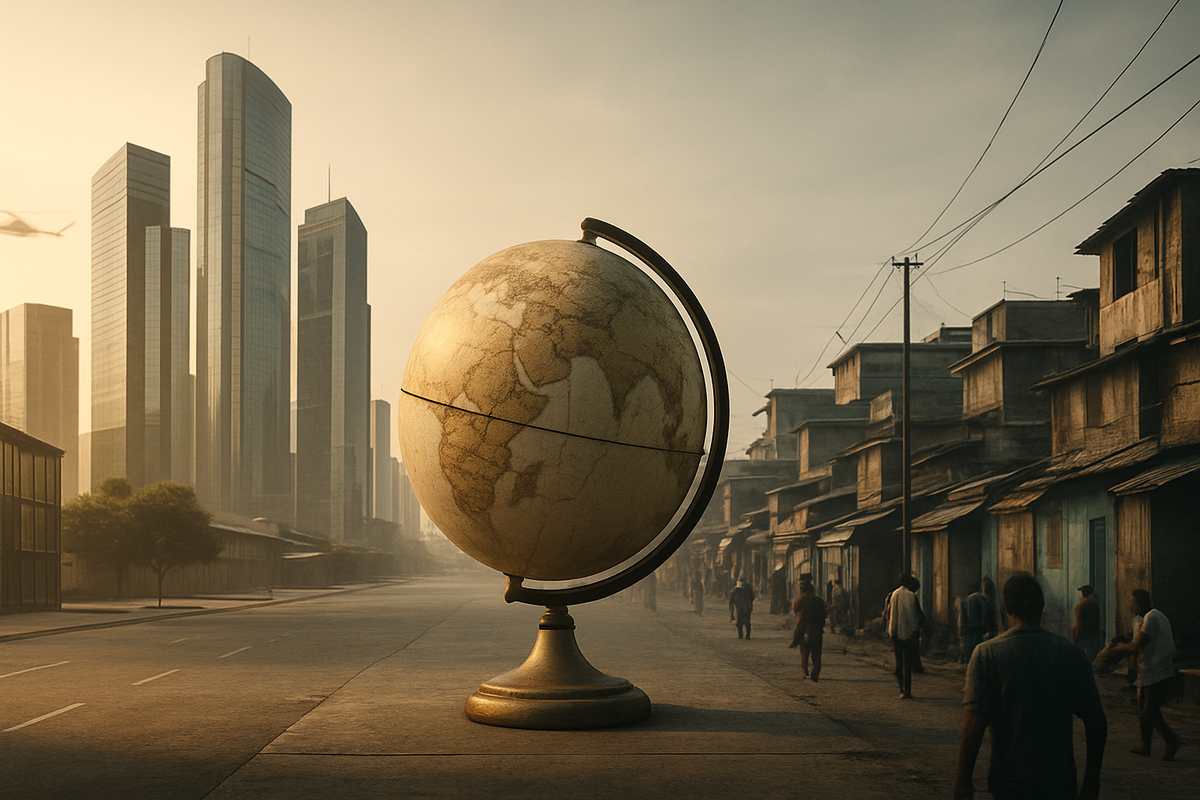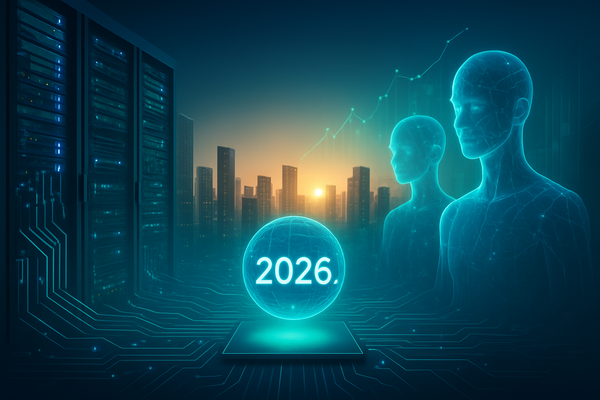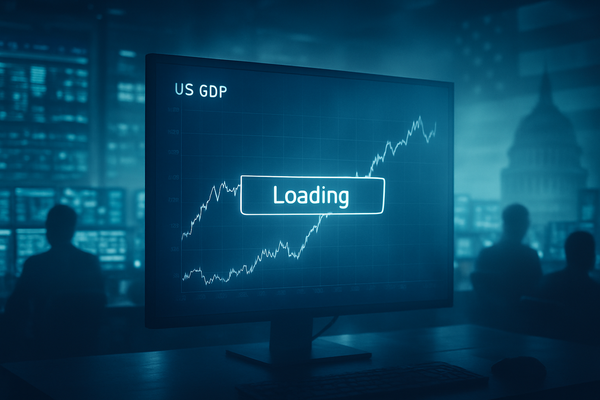The Chasm Deepens: Economic Inequality Threatens Global Stability and Trust

The world faces a deepening crisis of economic inequality, a pervasive issue characterized by a widening chasm between the rich and the poor. This persistent disparity in income and wealth distribution is not merely an economic challenge but a profound societal one, fueling increased social frustration, eroding trust in democratic institutions, and portending potential instability across the globe. As prosperity concentrates at the top, a growing sense of injustice permeates societies, challenging the very foundations of social cohesion and collective well-being.
The immediate implications of this widening divide are stark and far-reaching. From declining public confidence in governments and media to the rise of populist movements that capitalize on widespread discontent, the societal fabric is being stretched thin. The consequences extend beyond mere economic metrics, touching upon public health, social mobility, and the perceived fairness of the systems that govern daily life. Without concerted efforts to address these disparities, the trajectory points towards a future fraught with heightened social tension and diminished collective progress.
The Uneven Harvest: How Wealth Concentrates and Trust Dissolves
The current state of global economic inequality reveals a deeply uneven distribution of prosperity. While the global average per capita national income in 2023 stood at approximately €12,800 per year (Purchasing Power Parity), this figure masks extreme disparities. For instance, the average income in Sub-Saharan Africa was a mere €240 per month, compared to over €3,500 in North America and Oceania—a fifteen-fold difference. Since 1980, income inequality within countries has steadily increased, with the poorest 50% consistently earning less than the richest 10% in every region.
Wealth concentration presents an even more alarming picture. Across OECD countries, households in the top 10% of wealth distribution own more than half (52%) of all total household wealth, a figure that surges to 79% in the United States. Globally, the poorest half of the population possesses a mere 2% of total wealth, while the wealthiest 10% control a staggering 76%. The Gini coefficient, a key measure of inequality, indicates persistently high global inequality, with the world described by the World Inequality Database (WID.world) as "like a giant South Africa" in terms of resource concentration. The post-COVID-19 era has further exacerbated these trends, with the share of global wealth held by billionaires increasing from 1% in 1995 to over 3% today, while the richest 10% of the global population accounts for 52% of total income, leaving the poorest half with just 8%.
This widening rich-poor divide has profound societal ramifications. Economic inequality is a significant driver of social frustration, often manifesting as increased support for nativist parties and autocratic leaders who exploit public grievances against "elite" institutions. This dynamic deepens political polarization and fosters pervasive cynicism about political and economic systems, sometimes leading to widespread protests and societal destabilization. Studies indicate a consistent negative relationship between income inequality and trust in democratic institutions across Europe, and in the United States, declining confidence in political institutions has been linked directly to rising income inequality.
Moreover, economic inequality is identified as one of the strongest predictors of democratic erosion, even in established democracies. The 2025 Edelman Trust Barometer reported that 61% of respondents harbored a moderate or high sense of grievance against the government and the rich, directly contributing to the erosion of trust in government (25%), media (34%), business (42%), and NGOs (45%). Beyond political and social trust, high inequality is linked to higher rates of health and social problems—including obesity, mental illness, and incarceration—and lower rates of social goods like overall happiness. It also correlates with reduced cooperation among individuals and diminishes perceptions of shared fate, thereby significantly decreasing social cohesion.
The Bifurcated Economy: Who Thrives and Who Struggles
The persistent trend of economic inequality reshapes market dynamics, creating clear corporate winners and losers. As wealth increasingly concentrates at the top and the middle class faces erosion, industries catering to either the affluent or the budget-constrained segments of society tend to thrive, while those reliant on broad-based middle-income consumer spending often struggle. This bifurcation reflects a fundamental shift in purchasing power and consumer priorities across the economic spectrum.
On one side of the divide, luxury goods and high-end services companies are clear beneficiaries. As the disposable income and wealth of the richest segments grow, so does their demand for exclusive products and premium experiences. This phenomenon, often driven by the "Veblen effect" where demand for luxury items increases with price due to their status-signaling function, boosts the fortunes of brands synonymous with exclusivity. For instance, LVMH Moët Hennessy Louis Vuitton (EPA: LVMH), a global luxury conglomerate, alongside high-end retailers like Nordstrom (NYSE: JWN) and automotive brands like Mercedes-Benz Group AG (FWB: MBG), report strong sales of their most expensive offerings. Companies like Chanel, Christian Louboutin, and Tiffany's also find a robust market among those for whom opulence is a lifestyle. Simultaneously, the financial services and asset management sectors also flourish, as the wealthy invest a larger proportion of their income and savings, channeling significant funds into stocks and bonds managed by major financial institutions.
Conversely, at the other end of the economic spectrum, discount retail and value chains see increased demand. As lower-income individuals and a shrinking middle class grapple with stagnant wages and rising costs, the focus shifts to affordability and essential goods at the lowest possible prices. Retailers such as Dollar General Corp. (NYSE: DG) and Walmart Inc. (NYSE: WMT) are well-positioned to cater to this large demographic, offering budget-friendly options. Walmart, in particular, has faced scrutiny for its significant shareholder payouts and a widening CEO-to-worker pay gap, exemplifying how certain business models can exacerbate economic disparities. Additionally, large corporations with scalable business models, particularly in technology—like Amazon.com Inc. (NASDAQ: AMZN) and Tesla Inc. (NASDAQ: TSLA)—or consumer products like Coca-Cola Company (NYSE: KO) and Nike Inc. (NYSE: NKE), continue to report strong revenues by leveraging broad market reach and technology to concentrate profits among executives and shareholders.
However, the "hollowing out" of the middle class severely impacts mass-market retailers and manufacturers of mid-range products. Companies traditionally catering to a broad middle-income demographic find it increasingly challenging to sell at full price or move discretionary items, leading to constricted product assortments and declining revenues. Small businesses also face significant headwinds; as household savings increasingly flow into capital markets benefiting large firms rather than bank deposits, small businesses find financing more costly and difficult to obtain, hindering their growth and job creation potential. Traditional manufacturing industries in advanced economies, which historically provided stable, well-paying jobs and helped build the middle class, have also suffered, with a shift towards lower-paying service sector roles contributing to increased wage dispersion and inequality.
Broadening Cracks: Industry Impact and Societal Implications
The widening chasm of economic inequality extends far beyond individual households, casting long shadows across entire industries and challenging the fundamental principles of societal cohesion. This persistent disparity intertwines with global economic trends like automation and globalization, creating a complex web of ripple effects that demand urgent attention.
Automation, particularly the rapid advancements in machine learning and artificial intelligence, stands as a significant driver of this deepening inequality. While promising efficiency gains, it disproportionately impacts middle and low-skilled workers by automating routine tasks, leading to job displacement, wage stagnation, and a widening "skill premium" for highly educated individuals who can leverage these new technologies. Studies, such as one by MIT economists, suggest automation accounted for over half of the increase in the income gap between more- and less-educated workers in the U.S. between 1980 and 2016. Similarly, globalization, while lifting millions out of poverty in developing nations, has contributed to wage polarization in developed economies. High-skilled workers often benefit from access to new global markets, but lower-skilled workers face increased competition and job offshoring, further exacerbating the "hollowing out" of the middle class and concentrating wealth among elites.
The ripple effects of inequality are profound, impacting economic growth, innovation, and public services. Economically, persistent inequality can impede overall growth by reducing aggregate demand, as income is redistributed from lower- and middle-income households (who tend to spend more) to higher-income households (who have a greater propensity to save). This can lead to slower GDP growth, with estimates suggesting a potential drag of 1.5% annually in the U.S. Inequality also stifles innovation and entrepreneurship, as barriers to accessing financial capital, quality education, and crucial social networks limit opportunities for individuals from less affluent backgrounds to start businesses. This can result in a decline in new startups and reduced investments in human capital, harming future economic competitiveness. Furthermore, the market itself is distorted, leading to an increased preference for "status consumption" among consumers and a reduction in the availability of mid-range products, as manufacturers increasingly cater to the fragmented demands of the high-end and low-end markets.
On a societal level, economic inequality places immense strain on public services. It contributes to significant disparities in access to quality education and healthcare, with lower-income children often facing disadvantages in educational resources and limited health insurance coverage for vulnerable populations. Public services are critical for mitigating inequality, acting as a form of "virtual income" that can reduce income inequality by an average of 20% in OECD countries. However, high inequality erodes trust in public institutions, fuels social discord, and can lead to a disproportionate tax burden on the middle and lower classes. Historically, periods of extreme inequality, such as the Industrial Revolution or the Gilded Age in the United States, were characterized by vast wealth concentration, precarious worker conditions, and subsequent economic instability like the Great Depression. These historical precedents underscore the link between high inequality and political instability, social unrest, lower investment rates, and slower economic growth, often fueling nativism and extreme nationalism.
These broad implications have sparked intense regulatory and policy debates aimed at fostering greater societal cohesion. Key proposals include implementing wealth taxes and more progressive taxation systems to redistribute income and wealth, increasing the minimum wage to lift individuals out of poverty, and strengthening antitrust enforcement to curb monopoly power. Expanding social safety nets, such as the Earned Income Tax Credit and unemployment benefits, is also crucial for supporting vulnerable populations. Moreover, significant investment in human capital through improved access to quality education, retraining programs, and potentially student debt relief, is seen as vital for enhancing economic mobility and productivity.
The Road Ahead: Navigating a Divided Economic Landscape
The trajectory of persistent economic inequality presents both formidable challenges and potential pathways for strategic adaptation and policy intervention. In the short term, societies are likely to continue grappling with heightened social tensions and political polarization, as the grievances stemming from wealth disparities persist. Public and private sectors will face increasing pressure to address these imbalances, leading to more vocal demands for corporate accountability and government action. Companies operating in the bifurcated market will need to hone their strategies, either by further specializing in luxury or value segments or by innovating to create genuinely accessible and high-quality products that can appeal across income levels.
Looking further ahead, the long-term possibilities are diverse, ranging from deepening divisions and potential social unrest to significant policy shifts aimed at inclusive growth. Governments may increasingly explore or implement policies such as universal basic income (UBI), comprehensive wealth taxes, or more aggressive antitrust measures to rein in corporate power and foster competition. There could be a renewed focus on strengthening labor unions and enhancing worker protections to improve wage growth for the majority. For businesses, this might mean adapting to a more regulated environment, with greater emphasis on environmental, social, and governance (ESG) factors, and potentially higher labor costs. Market opportunities could emerge in sectors dedicated to social mobility, affordable housing, sustainable development, and advanced education/reskilling programs designed to bridge the skill gap created by automation.
Potential strategic pivots for corporations include investing more in employee training and benefits to ensure a stable and productive workforce, engaging in ethical supply chain practices, and contributing more visibly to local communities to rebuild trust. Companies might also explore business models that prioritize stakeholder value over solely shareholder profit. However, challenges will include navigating potential backlash from entrenched interests, managing increased tax burdens, and dealing with shifts in consumer loyalty driven by social consciousness. Scenarios could range from a gradual, managed recalibration of economic systems towards greater equity, possibly driven by political will and technological advancements (e.g., in personalized education), to periods of significant social disruption if the divide continues to widen unchecked, leading to increased calls for radical change.
A Reckoning on the Horizon: Rebalancing Our Economic Future
The persistent rise of economic inequality and the widening rich-poor divide represent a critical juncture for global societies and financial markets. The key takeaways are clear: unchecked disparities erode social cohesion, undermine trust in institutions, stifle broad-based economic growth, and pose a significant risk of instability. The current economic landscape is characterized by a bifurcated market that favors luxury brands and discount retailers, while squeezing the traditional middle-class consumer and the businesses that cater to them. Meanwhile, mega-corporations and financial institutions often consolidate wealth, sometimes exacerbating these very disparities.
Moving forward, the market will likely be shaped by the ongoing tension between the forces driving inequality and the growing societal demands for greater equity. Investors should watch for several key indicators in the coming months and years. These include the trajectory of legislative debates around progressive taxation, minimum wage increases, and antitrust enforcement, as these policies could significantly alter corporate profitability and investment landscapes. Furthermore, monitoring social movements and public sentiment will be crucial, as sustained social frustration can translate into political pressure for systemic change. Companies demonstrating genuine commitments to stakeholder capitalism, fair labor practices, and community investment may find themselves better positioned to weather potential regulatory shifts and gain consumer trust.
Ultimately, addressing economic inequality is not merely an ethical imperative but an economic and societal necessity. A more equitable distribution of wealth and opportunity promises not only greater social stability but also a more robust and sustainable economic future, fueled by broad-based demand, innovation, and trust. The challenge lies in translating this understanding into actionable policies and corporate strategies that can effectively rebalance our economic future and foster greater societal cohesion for generations to come.



